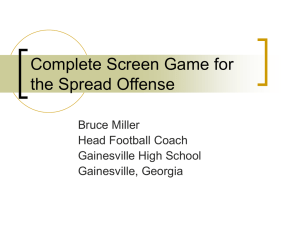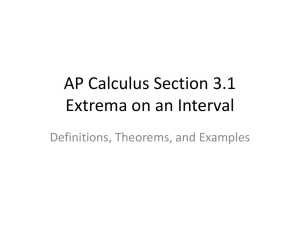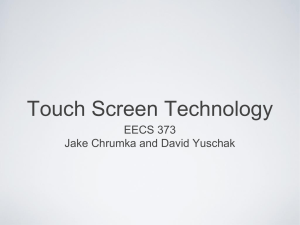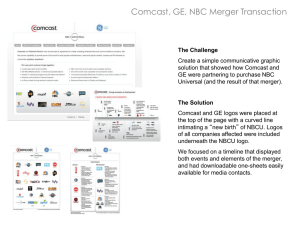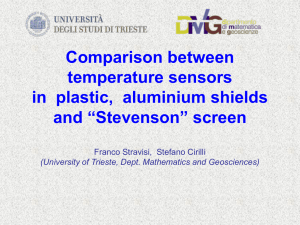WMO Field intercomparison of thermometers screens and
advertisement
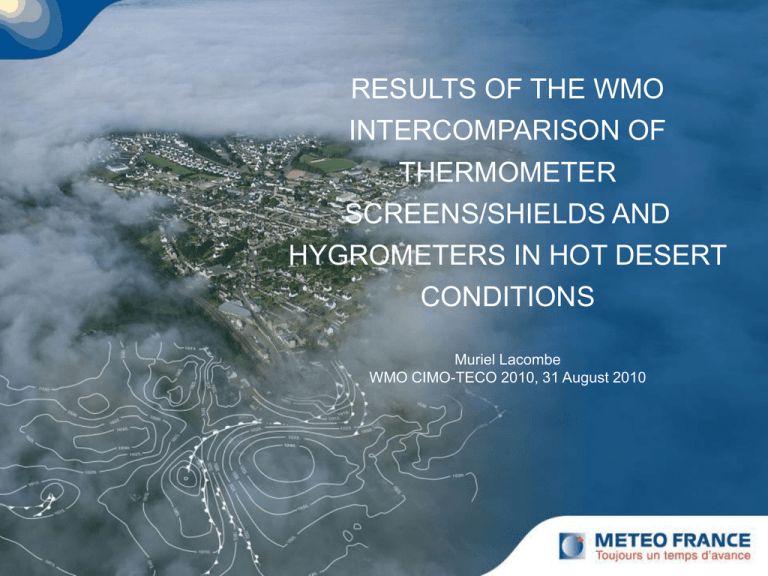
RESULTS OF THE WMO INTERCOMPARISON OF THERMOMETER SCREENS/SHIELDS AND HYGROMETERS IN HOT DESERT CONDITIONS Muriel Lacombe WMO CIMO-TECO 2010, 31 August 2010 Contents 1. Introduction • • 2. Methods • • • • 3. 4. 2 Background Objectives Site Instruments Calibration QA/QC Results Conclusions Introduction Background Several intercomparisons of screens and hygrometers, all in temperate conditions None in hot or cold desert conditions Importance for climatology Objectives Performance of screens/shields for high radiations Performance of hygrometers in high temperatures and very low humidity conditions Evaluate the impact of ancillary factors on the sensors Draft recommandations to CIMO 3 Methods - 1 Site Ghardaïa, in central Algeria Instruments 29 screens/shields o artificially-ventilated: 7 different models o naturally-ventilated: 9 different models 17 humidity sensors (8 different models) 2 extra Thies ultrasonic wind sensors Most of sensors were installed in pairs. Intercomparison period From the 1st of Nov., 2008 to the 1st of Nov., 2009 4 Methods - 2 Calibration Temperature measurements: calibrated Pt100 Before the intercomparion, in the RIC of Trappes On-site calibration No calibration after the intercomparison for the moment QA/QC Daily check by local staff Pictures taken once per month Specific software to flag data according CBS recommendations 5 Results One full year of measurements A large dataset although some gaps in the data More than 500 000 minutes available for most of sensors o More than 95% available valid data The analysis was made jointly by : o Météo-France : Muriel Lacombe and Michel Leroy o ONM: Djazia Bousri and Mohamed Mezred Final report : published soon A dedicated study for each model of instrument is available 6 Temperature during the intercomparison period 7 Relative humidity during the intercomparison period 8 Choice of the references Screens Artificially-ventilated screen The coldest during daytime Choice: Eigenbrodt screen Hygrometers Thygan as first reference Communication problems with Thygan, during the last 6 monthes Another reference, the closest to Thygan Choices: Thygan and Vaisala HMP45D 9 Temperature differences with VEIG22 (°C) 10 Median 5% - 95% interval 345461 239793 SVAI1 SVAI2 25% - 75% interval 0.5% - 99.5% interval 11204 44570 44570 VYOU2 503124 VFIS2 VTHY2 503124 VFIS1 VYOU1 476818 VEIG21 9655 503124 VEIG12 499531 503116 VEIG11 VROT1 503124 VDAV2 VTHY1 503124 VDAV1 503124 503124 SSOC2 503124 503124 SSOC1 SYOU2 503124 SDAV2 SYOU1 503123 503124 503124 LSOC SDAV1 503124 503124 SWIN2 503124 LLAN2 SWIN1 503124 LCAS -1,5 LLAN1 -1 503124 -0,5 308333 0 LBOM 0,5 ATHI2 1 329206 1,5 ATHI1 Results for screens - 1 General results Nearly all small naturally-ventilated screens are warmer Artificially-ventilated screens are not significantly colder Large Stevenson screens are very close to the reference Number of cases Screen/Shield Extrema Results for screens - 2 During clear days and low wind speeds Some small naturally-ventilated screens are colder Artificially-ventilated screens are generally warmer Large Stevenson screens are very close to the reference 325 4720 4720 VTHY2 VYOU1 VYOU2 18006 VFIS2 247 18006 VFIS1 18005 17060 VEIG21 VROT1 18006 VEIG12 VTHY1 18006 VEIG11 8907 SVAI2 18006 14159 SVAI1 VDAV2 18006 SSOC2 18006 18006 SSOC1 18006 18006 SDAV2 SYOU2 18006 VDAV1 18006 LSOC SDAV1 18006 18006 LLAN2 18006 18006 LLAN1 SWIN2 18006 LCAS SYOU1 18006 LBOM 18006 12657 ATHI2 SWIN1 14214 ATHI1 Number of cases 5 Temperature differences with VEIG22 (°C) 4 3 2 1 0 -1 -2 -3 -4 -5 Screen/Shield 11 Median 5% - 95% interval 25% - 75% interval 0.5% - 99.5% interval Extrema Results for screens - 3 Combined effect of wind and radiation 12 Results for hygrometers - 1 General results 5 models gave very good results: 98% differences are within ± 3% 2 models stayed within 4% of the reference 1 model showed larger deviations UHMP11 UHMP12 UHMP21 464160 464159 464114 9600 11043 VTHY2 SVAI2 463970 VTHY1 SVAI1 464168 VROT1 464168 VFIS2 464077 VFIS1 464064 UTES2 241294 UHMP22 329350 LBOM Relative humidity differences with UHMP2 (%) Number of cases 464160 20 18 16 14 12 10 8 6 4 2 0 -2 -4 -6 -8 -10 -12 -14 -16 -18 -20 Sensor 13 Median 5% - 95% interval 25% - 75% interval 0.5% - 99.5% interval Extrema Results for hygrometers – 2 Periods with relative humidity lower than 20% UHMP11 UHMP12 UHMP21 86305 86305 86304 0 0 VTHY2 SVAI2 86307 VTHY1 SVAI1 86308 VROT1 86308 VFIS2 86305 VFIS1 86305 UTES2 64156 UHMP22 68206 LBOM Number of cases 86307 6 Relative humidity differences with UHMP2 (%) 5 4 3 2 1 0 -1 -2 -3 -4 -5 -6 Sensor Median 14 5% - 95% interval 25% - 75% interval 0.5% - 99.5% interval Extrema Conclusions – What is next? Final report : published soon It is the first WMO intercomparison of screens/shields and hygrometers in hot desert conditions Despite some gaps, a large dataset was collected during this intercomparison A deep analysis was conducted: o To select references o To study each sensor’s behaviour Experience and specific tools were developped o Database systems, QC softwares, macros/codes for plots… A similar comparison is planned in Canada o for cold desert conditions 15 Thank you !
